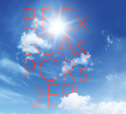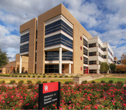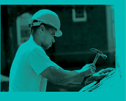Changes to the latest editions of the model building codes have removed exemptions from fire testing for certain roof assemblies that previously were granted fire classifications without testing. If you are involved in the manufacturing, design, specification or installation of architectural metal panel, metal shingle, tile or slate roof systems, you should be aware of these revisions and the effects they may have on roof assembly designs.
Historical exemptions
The model building codes and most jurisdictions' codes historically have exempted certain roof covering types from fire testing and granted them fire classifications without testing. For example, the International Building Code,® 2006 Edition considered roof coverings of brick, masonry, slate, clay or concrete roof tile, exposed concrete decks, and ferrous or copper shingles or sheets to be Class A without fire testing. Similarly, roof coverings of other (nonferrous or copper) metal sheets and shingles were considered Class B without fire testing. At the time, the codes granted these roof coverings exemptions because they were thought to be inherently fire-resistant.
Code changes
Beginning with the 2009 editions of the International Building Code (IBC) and International Residential Code® (IRC), the model codes revised their fire-resistance classification requirements and removed some of the previous exemptions from fire testing. For example, IBC 2009 requires the fire classifications of metal panels or shingles, tile and slate roof systems installed over combustible roof decks to be listed and identified.
Such listings require fire testing according to ASTM E108, "Standard Test Methods for Fire Tests of Roof Coverings," or UL 790, "Tests for Fire Resistance of Roof Covering Materials." Combustible roof decks include wood sheathing and wood planks and boards.
The rationale for these code changes is recognition that though the topmost surface of these roof coverings may be relatively fire-resistant, other components used with these roof assemblies may be combustible. For example, rosin-sized sheathing paper and certain underlayments burn in certain assembly configurations during fire testing.
The historic exemptions remain for brick, masonry and exposed concrete deck surfaces; ferrous or copper sheets or shingles, metal sheets or shingles, clay or concrete tile or slate installed on noncombustible decks; and ferrous, copper or metal sheets installed on noncombustible framing without a roof deck. These roof coverings still are considered Class A without fire testing.
Subsequent revisions
For the 2012 editions of IBC and IRC, 16-ounce copper sheets or panels are permitted to be installed over combustible decks and be considered Class A without a listing or fire testing. This code change was based on testing conducted by the Copper Development Association that demonstrated fire performance equivalent to Class A.
NRCA and the National Slate Association have conducted fire testing substantiating certain slate roof assemblies also demonstrate fire performance equivalent to Class A. For additional information, see "Fire testing slate," October 2010 issue, page 26.
An exemption based on this testing will be included in the 2015 editions of the IBC and IRC.
Words of caution
Although revisions to the historic exemptions for fire testing of certain roof assemblies have been in place since 2009, knowledge of these code changes and manufacturers' fire testing and the necessary listings to document fire performance for these assemblies appear limited.
NRCA has conducted an informal survey of product manufacturers affected by these code changes and found only about half were aware of the code changes. Also, fewer than half the manufacturers surveyed have successfully conducted the necessary fire testing.
A number of manufacturers who have obtained listings have done so using fire-resistant underlayments instead of conventional underlayments. It should be noted fire-resistant underlayments currently are not directly acceptable; use of the codes' alternative material provisions is needed for these products.
Other manufacturers have incorporated glass-faced gypsum board installed directly over roof decks into their roof system configurations over combustible roof decks.
Designers and specifiers should work closely with manufacturers to ensure their designs have the necessary fire testing and listings for code compliance.
Mark S. Graham is NRCA's associate executive director of technical services.
Did You know?
Code compliance information is contained in Guidelines for Complying With Building Code Requirements for Roof Assemblies: International Building Code, 2012 Edition and Guidelines for Complying With Building Code Requirements for Roof Assemblies: International Building Code, 2009 Edition; both are available from shop.nrca.net.



